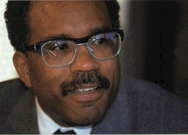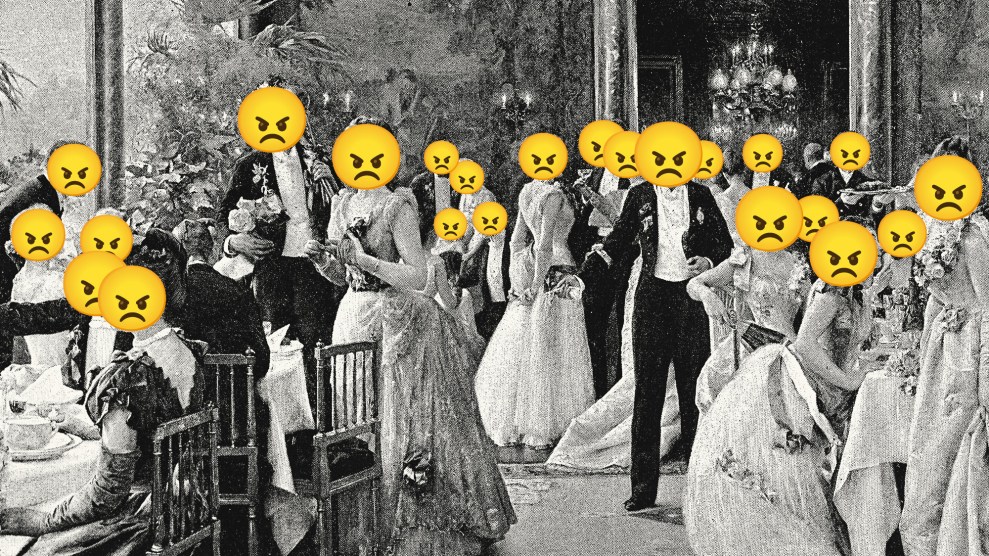
Randall Kennedy has a cautious temperament. “He’d make a terrific judge,” says one colleague. But even Kennedy acknowledges that his new book, Race, Crime, and the Law (Pantheon Books, 1997), traverses “bitterly contested crossroads.” The 42-year-old Harvard law professor clerked for former U.S. Supreme Court Justice Thurgood Marshall and, like Marshall, nurtures a faith in the American legal system. This faith is hotly disputed by other African-American intellectuals, many of whom believe the courts are inherently biased.
Aware that he may be accused of being naive, or even insensitive to racism, Kennedy has taken pains in Race, Crime, and the Law to place his arguments for legal color blindness in the historical context of slavery and post-Reconstruction discrimination. From that vantage point, he argues that blacks have suffered more from underprotection than overprosecution. Women slaves, for instance, had little recourse against rape. He asks, “Are black communities hurt by police crackdowns on violent gangs or helped by the destabilization of gangs that terrorize those who live in their midst?” Acutely sensitive to racial hypocrisy, he takes on figures as diverse as William Rehnquist (for voting against race-based employment preferences but for allowing police to use race as a criterion for determining suspiciousness) and Johnny Cochran (for “playing the race card” in O.J.’s defense). And his views do not fall neatly into identifiable camps: He sees the fact that proportionally many more blacks are put to death by the state as a grave injustice, but he also contends there are sound reasons for punishing commerce in crack cocaine more severely than that in powdered cocaine. Hugh Pearson interviewed Kennedy at the professor’s Cambridge office.
Q: You think that purposely aiming for racially balanced juries should be done only when the need for it can be specifically proven. Wouldn’t it be pretty easy to prove, given the prevalence of racism in our society?
A: I’m sure this will be one of the places where the book is criticized the most. I’m against the deployment of racial distinctions in the law to create racially mixed juries. I’m for a strong and vigorously enforced anti-discrimination norm so that nobody is excluded on a racial basis. After that, I say, that’s enough. If it so happens that, say, a white politician in D.C. is tried by a jury that happens to be all black, as far as I’m concerned that’s no problem. Those 12 people are Americans, and they should be granted the presumption that they will do their best to see that justice is done. I don’t think the white politician has any basis for saying that he’s been dealt with unfairly. The same thing goes for whites. If a black defendant finds him- or herself before an all-white jury, I don’t think that, per se, is unfair. He is being tried before 12 Americans, and I think we should presume that the jury will try to do the right thing. And if they don’t, then criticize them for that. But don’t criticize the jury for being all white.
Q: In your book you also argue that the way to diminish the disproportionately high number of African-American street criminals is to increase police presence in African-American communities.
A: I never say the cure for the tremendous amount of criminality that menaces our country — and it menaces black communities in particular — is just going to be police. It’s going to require changes in our employment policies and our education policies. It’s going to require a distribution, an investment in our society, that many politicians are clearly not willing to make, and I think that is terrible. So I don’t purport in this book to give a cure for the crime problem. One thing that will make things better is police and laws that treat people equitably. And to the extent that we don’t treat people equitably, we are going to simply be planting more seeds of distrust, hatred, paranoia.
Q: In addition to your claim that crack cocaine has more dire effects than powdered cocaine, you argue against continuing our present across-the-board campaign to keep drugs illegal. Would you support experimenting with the legalization of drugs?
A: I don’t know. My position is it should certainly be part of the discussion. We should not do what Bill Clinton and many other politicians have done, which is to essentially marginalize the question. We should have a debate about it. There are responsible people who articulate intelligent arguments for legalization — and legalization, literally, can mean many things — that seem to me to demand consideration. That’s as far as I go on that.
Q: At most prestigious schools, the black students, most of them, stay to themselves. Do you find that’s the situation at Harvard?
A: You still have that. But you know, it works on both sides. You also have self-segregation on the part of the white kids. It’s not as noticeable because there are so many, but you still have that. It’s a complex picture. For the most part, the white kids party with the white kids and the black kids party with the black kids. At the same time, it’s also true that there’s an appreciable amount of interracial interchange, whether it be intimate, intellectual…. Both things are going on. After class I see people of different races talking, sometimes laughing, in very strong conversation. I’d say this: Here at this school, as in many places in this society, there are lots of things happening. I hear people talk about, for instance, the “failure of integration.” Well, compared to what? Social relations at Harvard compared to 30 years ago? There’s much more interchange at every level than there was 30 years ago. And so I think that people too often accentuate what has not changed instead of paying more attention to what has changed.
Q: In your class a couple of students defending race-specific adoptions argued that children should be exposed to their “own” culture. What do you believe specifically defines a separate African-American culture, and by the same token, what defines a so-called white culture?
A: Well, people have in their minds an “African-American” culture, a “white” culture. But the fact of the matter is that the relationship between one’s race and one’s culture is a very complicated one. That’s why I don’t think it’s a good argument. When you want to teach an African-American kid his culture, what do you teach him? Do you teach him breakdancing? James Brown? What about the person who says, I’m not interested in James Brown, I’m interested in gospel music? I actually want to uncouple culture from racial status. We make race this very deterministic idea, that some sort of pigmentation equals something or other. And the fact of the matter is, pigmentation often steers you in one direction or another, but, you know, black people have all sorts of cultural likes and dislikes. And there is no “correct” way to be black.
Hugh Pearson is author of The Shadow of the Panther (Addison-Wesley, 1995).















